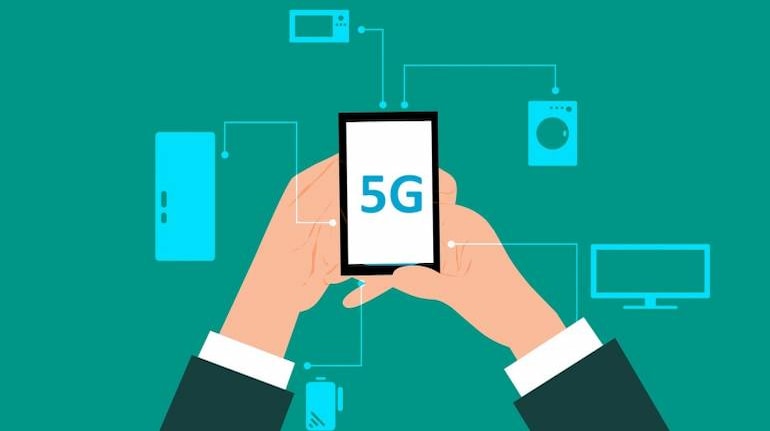



Globally, Europe won the 2G era, Japan and South Korea took the lead in 3G, the United States evolved strongly and led the 4G rollout, and now, China is slated to lead the 5G ecosystem.
Last year, Chinese operators were expected to have budgeted a spend of over $220 billion between 2019 and 2025 for the commercial rollout of 5G services in the country. Having started the 5G commercial deployments in Q4 2019, China already has over 110 million 5G subscribers (as of September). Chinese telecom operators had deployed over 460,000 5G base stations by the end of July, and that number was expected to cross 600,000 by the end of 2020.
Chinese companies have also invested significantly in innovation and development of 5G technologies. Huawei, the biggest Chinese telecom equipment and solutions provider, owns over 10 percent of 5G patents globally. Chinese telecom companies, including Huawei and China Mobile, have started to work with International standard bodies and individual countries’ (including India’s) regulators to get their 5G innovations and protocols adopted and standardised, in a bid to expedite global adoption of Chinese 5G technologies and solutions.
However, globally, especially in the western world led by the US, there has been a strong resistance and pushback for adoption of Chinese 5G equipment. India too, in the recent months, has announced a ban on a number of Chinese digital products and solutions, including 5G telecom equipment.
Jio’s Indigenous 5GWhile these developments were taking place, at the Reliance AGM in July plans for developing an indigenous 5G solution was announced. The recent news that it has partnered with global wireless technology major Qualcomm to expedite the development of Radio Access Network (RAN) solution, based on the latter’s 5G NR (New Radio) platform, must be seen in this global context.
Both the companies have also announced the results of their initial testing of the 5G solution to reach data speeds of 1 Gbps. Although the speeds for the end consumer on a commercially deployed network will be lesser than 1 Gbps, they will still be significantly higher than the current data speeds on Jio’s 4G LTE networks. In 2018, Reliance Jio also acquired US telecom solutions player Radisys, with an eye on future in-house 5G and Internet of Things (IoT) solutions.
Reliance Jio for its (currently operational) 4G LTE network had worked with Samsung, a relatively unknown player in the telecom network equipment industry, and deployed the Korean company’s solutions across India. So, Jio is experienced in working closely with global technology companies to develop and deploy tailor-made solutions. This experience and confidence, along with partnership with Qualcomm and acquisition of Radisys, could help the company in expedited 5G solution development.
Jio, for its current 4G LTE network, has built a next generation all-IP data core network. This network was built keeping future readiness in mind, and will now be useful for easy 5G RAN network deployment. Qualcomm’s 5G NR platform, on which Jio plans to build its indigenous solution, prioritises non-standalone (NSA) mode, which is built to develop and deploy 5G RAN network on an existing 4G core network. This particular choice of (Qualcomm’s 5G NR) platform will also significantly aid in expediting the development and commercial deployment of 5G solution for Reliance Jio.
This move by Reliance Jio to develop an indigenous 5G solution has not only put the Indian R&D ecosystem at the forefront of cutting-edge technologies development around the world, but it has also spurred the innovation spirit among other ecosystem players. Post-Jio’s announcement, Airtel has also announced its intent to develop and manufacture in-house 5G equipment in partnership with Indian, American and Japanese technology companies such as Tejas Networks, Flex, Mavenir, Xilinx and Altiostar. Both Reliance Jio and Airtel plan to take their indigenous 5G solutions and equipment globally to Africa, West Asia, Bangladesh, Eastern Europe (Reliance Jio) and Sri Lanka (Airtel).
An Indian 5G solution will also be a good option (along with Europe’s Ericsson and Nokia) for different players across the world who might be wary of deploying Chinese 5G equipment. If this solution follows the same trajectory as other technology products developed by Indian companies, the global players could actually have an affordable, scalable and robust solution as an option.
(Disclosure: Reliance Industries Ltd. is the sole beneficiary of Independent Media Trust which controls Network18 Media & Investments Ltd.)Jayanth Kolla is Partner, Convergence Catalyst. Views are personal.Discover the latest Business News, Sensex, and Nifty updates. Obtain Personal Finance insights, tax queries, and expert opinions on Moneycontrol or download the Moneycontrol App to stay updated!
Find the best of Al News in one place, specially curated for you every weekend.
Stay on top of the latest tech trends and biggest startup news.